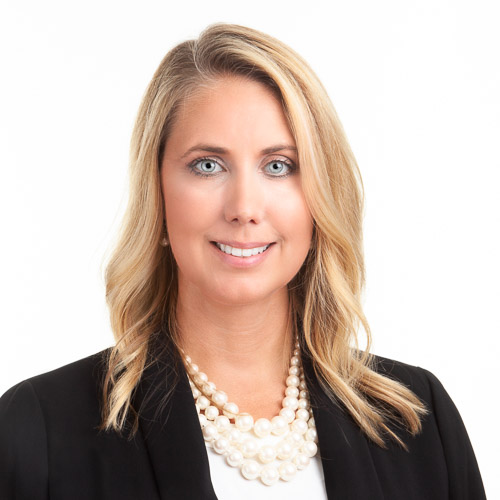
As the world’s largest reinsurer, Munich Re’s extensive market insights and analytical expertise enable us to analyze data and trends in one market and apply them to other segments of that same market or to different markets.1
In this paper, we leverage the knowledge and experience gleaned from reinsuring individual disability income (IDI) policies for physicians and other medical professionals in the United States and apply that knowledge to the U.S. Group Long Term Disability (LTD) insurance market.
LTD case underwriting often relies upon the historical experience of the entire group, which may not account for variations in occupation or medical specialty that could be occurring within that group. Unlike LTD, specific occupations and specialties are identified for IDI policies, and understanding these details could provide LTD underwriters and actuaries with a more complete picture of risk, enabling them to make more informed decisions.
To apply learnings from IDI to LTD, we first assessed which key aspects of medical professions have an impact on the rate of disability. Taking this high-level trend data, we cross-referenced that information with our individual disability income (IDI) business to compare the relative rate of disability incidence for these occupations. The result is the ability to categorize the medical professionals into estimated DI morbidity buckets from best (lowest) to worst (highest). These insights can be used by group underwriters and actuaries in evaluating a group of medical professionals seeking Group LTD coverage.
Some of the factors identified as contributing to differing levels of morbidity experience of medical professionals include:
- Job satisfaction [High = favorable]
- Compensation [High = favorable]
- Work Hours & Long shifts (especially if on location) [Low = favorable]
- Isolation or repetitive tasks (leading to boredom) [Low = favorable]
- Compassion fatigue & vicarious trauma [Low = favorable]
- Physical job demands [Low = favorable]
- Level of paperwork [Low = favorable]

Some of these risk factors are related. For example, long work shifts combined with high levels of paperwork and/or lower compensation often lead to lower job satisfaction. In addition, some factors can change over time (either favorably or unfavorably from the perspective of the medical professional) which can lead to a different pattern or level of morbidity.
Let’s review two examples that should help illustrate these ideas.
Example #1: Ophthalmologist [currently a favorable DI risk]
Most IDI carriers categorize ophthalmologists as a favorable risk, charging one of the lowest premium rates offered to medical professionals. This classification is based on our experience as a leading reinsurer in the IDI market.
A typical ophthalmologist:
- Makes $409,000 per year, on average.2
- Often has support staff.
- Does not provide on-call hours.
- Works in an office setting.
- Tends to have lower rates of burnout compared to other medical professions.3
- Experiences the lowest rate of depression among medical specialties surveyed.4
Example #2: OB-GYN [currently an unfavorable DI risk]
Most IDI carriers currently categorize OB-GYNs as an unfavorable risk, charging one of the highest premium rates offered to medical professionals. This classification is based on our experience as a leading reinsurer in the IDI market.
A typical Ob-Gyn:
- Makes $352,000 per year, on average.2
- Provide on-call hours, especially when a patient is in labor.
- Works in a hospital setting.
- Tends to have higher rates of burnout compared to other medical professions.3
What causes the differences in morbidity between medical professionals?
What factors could cause an ophthalmologist to have more favorable DI morbidity than an OB-GYN?
We created a hypothetical scale of the DI risk factors that we identified and assigned scores to ophthalmologists and OB-GYNs. The scores were determined based on our own experience with these specialties and on research of the risk factors from various sources.

Conclusion and application for Group LTD
Morbidity differences by specialty are material and certainly worthy of attention (and differentiation) in disability pricing. In fact, most IDI carriers in the U.S. that focus on the medical market now split medical professionals into three or four occupation classes, and there often is a 25% to 30% difference in premiums between those classes. The result is that a medical professional who is classified by IDI carriers as being in one of the highest classes (best DI risks) may pay half the premiums that a similar individual would pay if they were classified as being in one of the lowest classes (relatively worse DI risks).
For Group LTD, the underwriter or actuary often relies on the prior experience of the group --depending upon the assumed credibility of the prior experience -- blended with a manual rate to make an assessment. This raises two questions. First, does the manual rate consider the mix of occupations by medical specialty within the group? Second, has the mix of occupations or specialties within the group been stable over time? If the answer to either question is “no”, then leveraging our IDI insights by medical occupation could help LTD underwriters refine their risk assessment and help strike the right balance between caution and competitiveness.
A change in the mix of occupations within the group could occur in various scenarios. One example is the consolidation of blocks of smaller medical practices within a Management Services Organization (MSO). Our Group LTD underwriters recently reviewed such an MSO case, which reflects a growing trend over the past few years. This scenario presents an excellent opportunity to apply our IDI insights to help GLTD underwriters make informed decisions.
We hope that you find these examples thought-provoking. At Munich Re, we have detailed information regarding dozens of medical occupations and the corresponding IDI morbidity. We can work with your Group LTD team to develop an approach that leverages those insights and puts your team in a position that can drive growth and minimize risk exposure.
In addition, Munich Re continually strives to deliver solutions that will benefit our clients by helping to increase their profitability and operational effectiveness. If you’re not familiar with our breadth of offerings, they include tools and solutions to help carriers:
- Automate underwriting at both the individual AND the employer level
- Access more electronic health records (EHRs)
- Consolidate data from EHRs and enable its application to digital underwriting
- Automated evidenced-based decision support technology
References
Contact the authors
/Jim%20Filmore.jpg/_jcr_content/renditions/crop-1x1-400.jpg./crop-1x1-400.jpg)


Related Solutions
Newsletter
properties.trackTitle
properties.trackSubtitle



